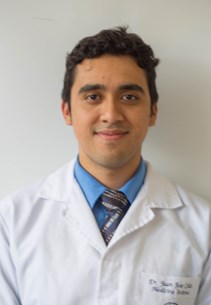Meeting
2024 ASCO Breakthrough

Sociedad Anticancerosa de Venezuela, Caracas, Venezuela (Bolivarian Republic of)
Juan Jose Celis , Vanessa Rodriguez , Crismar Rodriguez
Background: The prevalence of breast cancer in older adults (≥70 years) is increasing and worse outcomes compared to younger patients could be explained by advanced presentation, late diagnosis, deterioration of organ function, and the presence of multimorbidities. Older patients are under-represented in clinical trials. Therefore, the risks and benefits of anticancer therapy should be carefully evaluated. The CREATE-X36 and KATHERINE37 trials enrolled few older individuals but did not show any new safety concerns, older patients should be considered for trastuzumab in case of residual HER2-positive disease following neoadjuvant systemic therapy; neoadjuvant endocrine therapy for at least 4-6 months is useful for older patients who are not immediately suitable for surgery and aromatase inhibitors are favored over tamoxifen in view of better response rate. Although adjuvant trastuzumab is beneficial regardless of age, anti-HER2 (neo)adjuvant strategies remain poorly investigated in patients age 65 years or older. Pertuzumab can be considered for high-risk individuals, but diarrhoea can be debilitating in older adults, similarly with adjuvant neratinib. Age is associated with increased cardiac toxicity rates with trastuzumab,80 with 15–40% of patients requiring early discontinuation, particularly patients who are age 80 years or older and have multimorbidities. Methods: Open-label, exploratory, phase 2 study done at one center in Venezuela. Patients were eligible if they had previously untreated, histologically confirmed, unilateral, invasive, cN0, HER2-positive, ER-positive breast cancer and older >70y. Patients were treated every 3 weeks with intravenous trastuzumab (8 mg/kg loading dose followed by 6 mg/kg) and intravenous pertuzumab (840 mg loading dose in the first cycle and then at 420 mg) and intramuscular fulvestrant (500 mg) every 4 weeks for four cycles. The coprimary endpoints were change from baseline in Ki67 expression at surgery and pathological complete response. Results: Between January, 2020, and June, 2023, we enrolled 12 patients. At baseline, geometric mean Ki67 expression was 42·9 and 12·1 at time of surgery (n=8; p=0·013). A clinical objective response immediately before surgery was achieved by 10 of 12 patients. At surgery, eight patients had a pathological complete response in breast and axillary nodes. The most frequent grade 3 adverse events was diarrhea (n=4), and stomatitis. No grade 4 or serious adverse events were recorded in the study and there were no deaths. Conclusions: The combination of fulvestrant, trastuzumab, and pertuzumab had a effect on the expression of Ki67 and pCR at surgery. Triple targeting of ER, HER2, could be an effective chemotherapy-free treatment strategy for older patiens. Further clinical testing and additional molecular characterisation is necessary.
Disclaimer
This material on this page is ©2024 American Society of Clinical Oncology, all rights reserved. Licensing available upon request. For more information, please contact licensing@asco.org
2024 ASCO Breakthrough
Poster Session
Poster Session B
Thoracic Cancers,Breast Cancer,Gynecologic Cancer,Head and Neck Cancer,Hematologic Malignancies,Genetics/Genomics/Multiomics,Healthtech Innovations,Models of Care and Care Delivery,Viral-Mediated Malignancies,Other Malignancies or Topics
Local Disease
J Clin Oncol 42, 2024 (suppl 23; abstr 13)
10.1200/JCO.2024.42.23_suppl.13
13
B2
Abstract Disclosures
First Author: Nicholas Patrick McAndrew
2021 ASCO Annual Meeting
First Author: Giampaolo Bianchini
2023 ASCO Annual Meeting
First Author: Ashok Kumar Vaid
2023 ASCO Annual Meeting
First Author: Tarek Mohamed Ahmed Abdel-Fatah